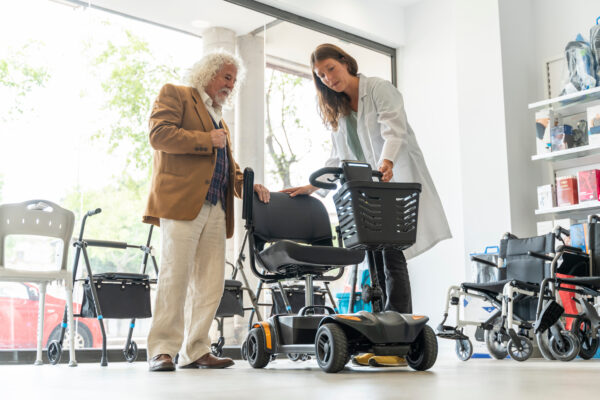 Mobility scooters are essential for enhancing the quality of life for seniors and individuals with various health conditions. These scooters provide vital independence, allowing residents to engage more fully in daily activities. However, with this freedom comes the responsibility of ensuring safety for both users and those around them. Here are important safety guidelines for mobility scooter use in senior living communities.
Mobility scooters are essential for enhancing the quality of life for seniors and individuals with various health conditions. These scooters provide vital independence, allowing residents to engage more fully in daily activities. However, with this freedom comes the responsibility of ensuring safety for both users and those around them. Here are important safety guidelines for mobility scooter use in senior living communities.
Understanding the risks
While mobility scooters offer numerous benefits, they also come with risks, including:
- Falls: Users may lose balance or misjudge their movements.
- Collisions: Scooters can bump into walls, doors, and furniture, leading to injuries.
- Tipping over: Uneven surfaces can cause scooters to tip, posing significant safety concerns.
- Harm to others: In crowded areas, scooters can inadvertently cause accidents with pedestrians or other residents.
Resident readiness
Before allowing residents to use mobility scooters, it is crucial to ensure they are ready. Here are key steps:
- Obtain clearance: A physician’s order from the primary care provider is essential to confirm that the resident is fit to use a mobility scooter.
- Professional assessment: Physical therapists, occupational therapists, or registered nurses should evaluate the resident’s vision, hearing, cognitive function, and physical ability.
- Training checklist: Establish a checklist covering all training details, which should be uploaded to the resident’s chart.
- Regular assessments: Conduct mobility assessments upon admission, annually, after incidents, and upon return from the hospital if applicable.
Training tips
Proper training is vital for safe mobility scooter use. Here are effective strategies:
- Direct training: Provide hands-on training for residents on essential functions such as starting, stopping, reversing, and turning.
- Ride-along assessments: Conduct assessments in high-traffic and challenging areas, including navigating elevators and uneven surfaces.
- Establish facility rules: Clearly communicate mobility scooter rules, including speed limits and conflict resolution procedures.
- Printed handouts: Provide easy-to-read printed materials outlining rules and safety tips for residents to reference.
- Designated areas: Create safe charging and parking areas to minimize hazards.
- Staff training: Train staff to identify and report unsafe scooter practices.
- Incident documentation: Document incidents and follow up with education and re-assessment to prevent future occurrences.
With proper training, assessments, and ongoing education, residents can enjoy their independence while minimizing risks, ensuring a harmonious living experience for everyone. To learn more about how to protect your community, check out our senior living practice.




